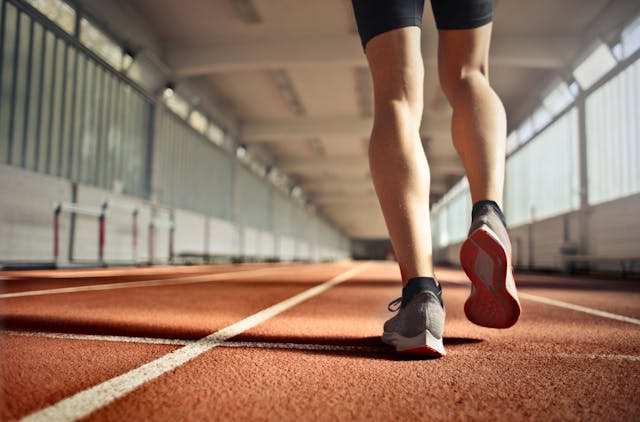You know that feeling when you’re sitting in the doctor’s office, and they’re strapping on that blood pressure cuff? It’s like waiting for a pop quiz you forgot to study for! For many, high blood pressure (a.k.a. hypertension) is a silent guest that sticks around without any obvious symptoms. But here’s the good news: managing your blood pressure doesn’t require a miracle pill or a complete lifestyle overhaul. One of the most effective remedies? Good old-fashioned exercise!
So, what’s the best exercise for lowering blood pressure? Let’s dive in and explore which workouts are backed by science, proven to help, and even (gasp!) enjoyable.
Why Exercise Helps Blood Pressure
Before we get into the details, let’s cover why exercise works wonders on blood pressure. When you work out, your heart becomes more efficient at pumping blood. With each beat, it pushes out more blood with less effort, which reduces the force on your arteries. Additionally, exercise helps lower the stress hormone cortisol, which in turn helps keep blood vessels relaxed and blood pressure lower. The American Heart Association recommends at least 150 minutes of moderate exercise per week for overall cardiovascular health. But some exercises may give your blood pressure an extra push in the right direction.
1. Walking: Simple but Mighty
Don’t underestimate the power of a good walk. Walking is a low-impact, easy-to-do exercise that’s accessible to almost everyone. Studies show that regular brisk walking can lower systolic blood pressure (the top number) by an average of 5 to 10 points. Harvard Medical School even calls walking “the closest thing to a perfect exercise.”
How does it work? Walking improves circulation and lowers stress levels, both of which are key to lowering blood pressure. And the best part? You don’t need any fancy equipment. Just lace up your sneakers and hit the pavement, treadmill, or even your local mall. Aim for a brisk pace to get the best results.
Quick Tip: Walk in Nature!
Studies show that walking in green spaces or near water can further reduce stress, making your blood pressure drop even faster. Take a stroll in the park or along a river, and you’re giving your body and mind a double boost.
2. Swimming: Dive into Lower Blood Pressure
If walking seems a bit too tame, try swimming. Swimming is a full-body workout that’s gentle on the joints but tough on calories and blood pressure. In fact, a study published in The American Journal of Cardiology found that older adults with high blood pressure who swam regularly saw significant drops in their systolic blood pressure—up to 9 points!
Why is swimming so effective? The water provides natural resistance, which strengthens your heart and improves circulation without the impact stress that comes from high-intensity exercises like running.
Fun Fact: Swimming for just 30 minutes a day can not only help reduce blood pressure but also improve cholesterol levels and boost lung capacity. So, next time you’re near a pool, remember: a few laps are doing more than just toning your muscles.
3. Strength Training: Lift Weights, Lower Pressure
Strength training may not be the first thing that comes to mind for lowering blood pressure, but lifting weights actually has a surprisingly positive impact. According to the American Heart Association, strength training twice a week can help lower blood pressure by making your muscles and blood vessels more efficient. When your muscles are stronger, your heart doesn’t have to work as hard to pump blood.
But be cautious! Go for lighter weights with higher repetitions instead of heavy lifting, which can temporarily spike your blood pressure. Think bodyweight exercises, resistance bands, or low-weight dumbbells.
Pro Tip: Make sure to breathe! Many people hold their breath while lifting weights, which can raise blood pressure temporarily. Keep it smooth and controlled to maximize benefits.
4. Yoga: The Ultimate Relaxation Workout
For those who prefer something low-key but highly effective, yoga might be your go-to. Beyond the impressive flexibility benefits, yoga is scientifically proven to reduce blood pressure, thanks to its focus on breathing and relaxation. A study published in The Journal of Alternative and Complementary Medicine found that individuals who practiced yoga regularly had reductions in both systolic and diastolic blood pressure.
Yoga helps reduce cortisol levels and improves heart rate variability, both of which contribute to lower blood pressure. Poses like “Child’s Pose,” “Legs-Up-the-Wall,” and “Corpse Pose” are especially calming and help release tension.
Bonus: Try Meditation with Yoga
Adding a few minutes of meditation to your yoga routine can enhance its blood pressure-lowering benefits. Meditation helps reduce stress and improve focus, making your overall workout even more beneficial for heart health.
5. HIIT (High-Intensity Interval Training): Quick and Effective
You might think high-intensity workouts are off-limits if you’re trying to lower blood pressure, but studies suggest otherwise. HIIT workouts—short bursts of intense exercise followed by rest periods—can actually help lower blood pressure. A study from the British Journal of Sports Medicine found that participants who did HIIT saw greater improvements in both systolic and diastolic blood pressure than those who did moderate exercise alone.
The key with HIIT is moderation. You don’t need to go all-out; keep the intervals short and manageable. For instance, try 20 seconds of a high-energy exercise like jumping jacks or sprints, followed by 40 seconds of rest, and repeat. This form of exercise helps boost metabolism and cardiovascular health without requiring an all-day commitment.
6. Cycling: Pedal Your Way to Better Pressure
If you enjoy a workout that allows you to sightsee (or binge-watch a show on a stationary bike), cycling is for you. Research shows that regular cycling can lower blood pressure by improving heart function and circulation. A large study of over 20,000 participants found that those who cycled to work had a 24% lower risk of high blood pressure than those who didn’t.
Whether you’re out on the road or on a stationary bike, aim for at least 30 minutes of cycling a few times a week. Not only will you see improvements in blood pressure, but you’ll also notice a positive impact on your mood.
Quick Tip: Try Interval Cycling
Alternate between a moderate pace and a fast, intense pace for short intervals to boost cardiovascular benefits even further.
Putting It All Together: The Ultimate Blood Pressure Workout Plan
If you’re ready to take charge of your blood pressure with exercise, here’s a weekly plan to get you started:
- Monday & Wednesday: Brisk 30-minute walk or light jog
- Tuesday & Thursday: 20-minute strength training session
- Friday: Yoga and meditation for relaxation
- Saturday: 30-minute cycling or swimming session
- Sunday: Rest or gentle stretching
This mix of cardio, strength, and relaxation-focused activities offers a well-rounded approach to lowering blood pressure naturally.
Final Thoughts: A Journey, Not a Race
Lowering blood pressure through exercise is a journey—so don’t expect results overnight. The good news? With consistent effort, you’re likely to see improvements within a few weeks. Start with activities you enjoy, gradually add variety, and remember that every step, pedal, or pose brings you closer to a healthier heart and a calmer, happier you.
So lace up, dive in, or roll out that yoga mat. Your heart—and your blood pressure—will thank you!


Pingback: Unpeeling the Truth: Are Bananas the Ultimate Daily Snack? - Wellness Readers Digest